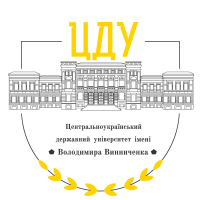MORPHONOLOGICAL TYPES AND PROPERTIES OF BASES VERBS OF WORDFORMING UNITS IN THE UKRAINIAN LANGUAGE
Keywords:
word-forming morphonology, word-forming unit, bases verb, alternations, morphonological type.Abstract
The article describes the morphonological structure of wordforming units with indivisible and divisible bases verbs is clarified in the article and the morphonological types and properties of bases verbs of word-forming units in the Ukrainian language are determined. The morphonological structure of word-forming units is determined by the structure of the apical verb, morphonological transformations, morphonological positions, morphonological type, morphonological model. The ending of the verb base, which undergoes changes under the influence of the initial of the formant, signalize morphonological transformations. All word-forming units with an inarticulate verb are divited among 22 morphonological types, with an indivisible verb is divided between 50 morphonological types, notice the character of the verb base, complex morphonological transformations (consonant or vocal alternations, types of final consonant base), open, closed), increase of radical or suffix morpheme, change of accent positions (shift of emphasis on root or suffix morpheme). Morphonologically marked deverbatives of substantive, adjectival, verbative, adverbial blocks are analyzed. The character of realization and regularity of morphonological phenomena in word formation during the formation of deverbatives are influenced by structural and phonemic properties, characteristics of creative bases and word-forming affixes, features of the contact zone on the morpheme seam, stress position, truncation, number of syllables. Indivisible verb bases are characterized by open and closed verb bases, divisible verb bases are characterized only by open verb bases. For articulated verb bases, the open structure of the suffix (V, VCV) is typical, open or cover-open (CV). Analyzing the bases verbs of word-forming units in the Ukrainian language, it is appropriate to take into count the indivisibility and divisibility of bases verbs, the final formative basis, variability / non-variability of verb bases, formant initials, morphonological transformations, morphonological positions, presence / absence of constraints in compatibility.
References
Демешко І. М. Морфонологічні класи словотвірних гнізд із нечленованими вершинними дієсловами в українській мові / І. М. Демешко // Наукові записки. Вип. 187. Серія : Філол. науки. – Кропивницький : КОД, 2020. – С. 115-121.
Демешко І. М. Морфонологічні класи словотвірних гнізд із членованими вершинними дієсловами в українській мові / І. М. Демешко // Філологічний часопис : зб. наук. праць / гол. ред. О. Ю. Зелінська. – Умань : ВПЦ «Візаві». 2020. Вип. 1 (15). – С. 38-44.
Махамаду Б. Истоки морфонологии (Морфонология в трудах ученых московской фонологической школы) / Б. Махамаду // Вестник РУДН. Серия : Теория языка. Семиотика. Семантика. 2012. №4. – С. 13-18.
Нелюба А., Редько Є. Словотворчість незалежної України. 2012–2016. Словник / укл. А. Нелюба, Є. Редько; заг. ред. А. Нелюби. – Х. : Харківське історико-філологічне товариство, 2017. 460 с.








